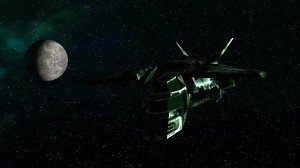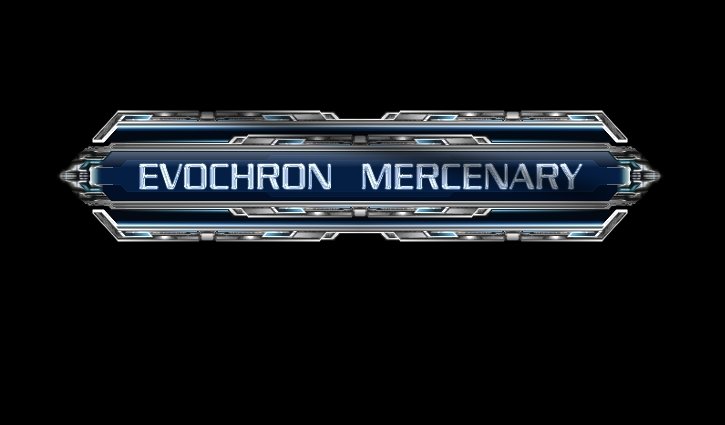In my time with Evochron Mercenary, I’ve realized they probably shouldn’t have let me out of the space academy. I’ve crashed into a planet twice, got chopped up in a space station engine, ran out of fuel in the middle of nowhere, and repeatedly used my warp drive to teleport directly into a planet’s core. Needless to say, I started out pretty wretched at this game, but if you think you’ve got the chops for a space career, or you’re just a huge space-sim fan, you might get a decent amount of mileage out of Evochron Mercenary.
Evochron Mercenary is the latest release (although not all that new, being released in 2010) in a long running series by  StarWraith 3D Games. It’s pretty clear this is a series made explicitly for fans, and as a fan of the space-simulation genre, I can appreciate the dedication they show. However, I can’t say it really does a lot to attract a new audience. Evochron Mercenary seems stuck between niches: not quite simple enough to be a beginner’s gateway to the wide variety of elite games, not quite complex enough to be a long term cult classic, like EVE Online or the X series.
StarWraith 3D Games. It’s pretty clear this is a series made explicitly for fans, and as a fan of the space-simulation genre, I can appreciate the dedication they show. However, I can’t say it really does a lot to attract a new audience. Evochron Mercenary seems stuck between niches: not quite simple enough to be a beginner’s gateway to the wide variety of elite games, not quite complex enough to be a long term cult classic, like EVE Online or the X series.
On first glance, the interface and gameplay of Evochron Mercenary is maddeningly complex and difficult. However, once you get the hang of things, the game becomes relatively simple to understand, which is both an asset and a fault. There is a really helpful in-game tutorial to teach you how to fly a ship properly, but it doesn’t do nearly enough to explain the mechanics of the game and the quirky UI. In order to have a chance at playing the game, I had to seek outside help in explaining basic mechanics, like setting a navigation point on a map or building a new ship. Thanks to Google, I discovered that Starwraith actually uploaded a seven-part tutorial series on Youtube that explains nearly everything you need to get started…in space! If you’re thinking about buying the game, these videos (or the manual) are essentially required. Half an hour of video lectures to learn how to play a game may sound a bit excessive, but it’s far  preferable to two hours of warping into planet cores.
preferable to two hours of warping into planet cores.
The funny thing is that once you understand the UI, the game becomes extraordinarily easy to get into. As I mentioned, this is both an asset and a fault. On one hand, Starwraith has crafted a game world that opens up dramatically once you master the quirks. You are basically given free reign over the entire universe to do what you will; if you want to take on mercenary contracts, become a powerful trader, or go off and fight in a war, it’s easy to do so. You can hire extra ships, go mining for precious metals, enter races, or become some kind of intergalactic Red Cross worker by answering the many distress calls sent out.
The problem with this simplicity is that none of the activities are all that engaging. Evochron seems to lack the kind of amazing, spontaneous moments that make or break an open-world space-sim. Most of the tasks you can do are pretty simple and very repetitive. Stuff like mining asteroid fields, gathering moisture from the atmosphere, cleaning dust off of satellites, or delivering packages feel more like a job and less like a game. Some might argue that the fun is moving up from galactic errand boy to multi-billion credit tycoon is the fun part, but it’s difficult to get into a game that feels like work.
The game does manage to break out of the doldrums occasionally, specifically during combat. Combat, more or less, seems to be  constricted to certain war zones and sectors, but the game does manage to make dog-fighting fairly fun. This is mostly because Evochron simplifies movement and inertia. Instead of managing dozens of jump jets and boosters at once, like in most space-sims, you can simply turn a system on or off that corrects your speed and movement orientation, and then use a few keys to control your auxiliary engines. It’s probably the simplest space-sim control scheme I’ve encountered recently. That’s not to say that printing off the keyboard controls is a bad idea, but once you get the hang of the controls, they’re very intuitive.
constricted to certain war zones and sectors, but the game does manage to make dog-fighting fairly fun. This is mostly because Evochron simplifies movement and inertia. Instead of managing dozens of jump jets and boosters at once, like in most space-sims, you can simply turn a system on or off that corrects your speed and movement orientation, and then use a few keys to control your auxiliary engines. It’s probably the simplest space-sim control scheme I’ve encountered recently. That’s not to say that printing off the keyboard controls is a bad idea, but once you get the hang of the controls, they’re very intuitive.
There are other neat features packed in that I enjoyed as well. The ability to fly into a planet’s atmosphere and practically land on the surface is really engrossing and immersive. Not burning up in the atmosphere is a bit tricky, but the sheer variety of planets to visit, mine, and plunder is pretty fun. The multiplayer almost completely changes the game, and is still well supported by a dedicated, tight-knit community. The multiplayer system is set up via dedicated servers that act like mini-MMO worlds. It’s a little tricky to join in as a complete newbie, but if you’re dedicated and hardcore enough, it could be a long-lasting game experience.
I guess the main downside to the game is a side effect of the vastness of space, where each mission and objective is a very lonely experience. You never really get into any unexpected situations; every contract tells you to warp to an isolated section of space, complete the objective, and warp back for a reward. Trading involves warping directly between stations to buy and sell goods. The warping mechanic is nice for the time it saves, but it eliminates a lot of the unexpected surprises a space-sim can offer. It’s a pretty good example of the space-sim genre, but for single-players, it doesn’t really manage to fill any particular niche that isn’t handled better elsewhere.
between stations to buy and sell goods. The warping mechanic is nice for the time it saves, but it eliminates a lot of the unexpected surprises a space-sim can offer. It’s a pretty good example of the space-sim genre, but for single-players, it doesn’t really manage to fill any particular niche that isn’t handled better elsewhere.
One tricky point to bring up is the general instability. The game can and will crash frequently if you have a 64-bit computer; you need to either modify your file with a program like CFF Explorer, or download a widely circulated fan patching system. Without this fix, I could not make it past the menu. It seems like a huge oversight for Starwraith, considering how widespread the issue is.
Final Verdict: A fun and decent space-sim game that doesn’t do much to improve genre elements. Stability is a big problem, but multiplayer is quite robust, if a bit hard to break into.
Rating: 









This review is based on a review copy of the Steam version of Evochron Mercenary provided by Starwraith 3D Games.


